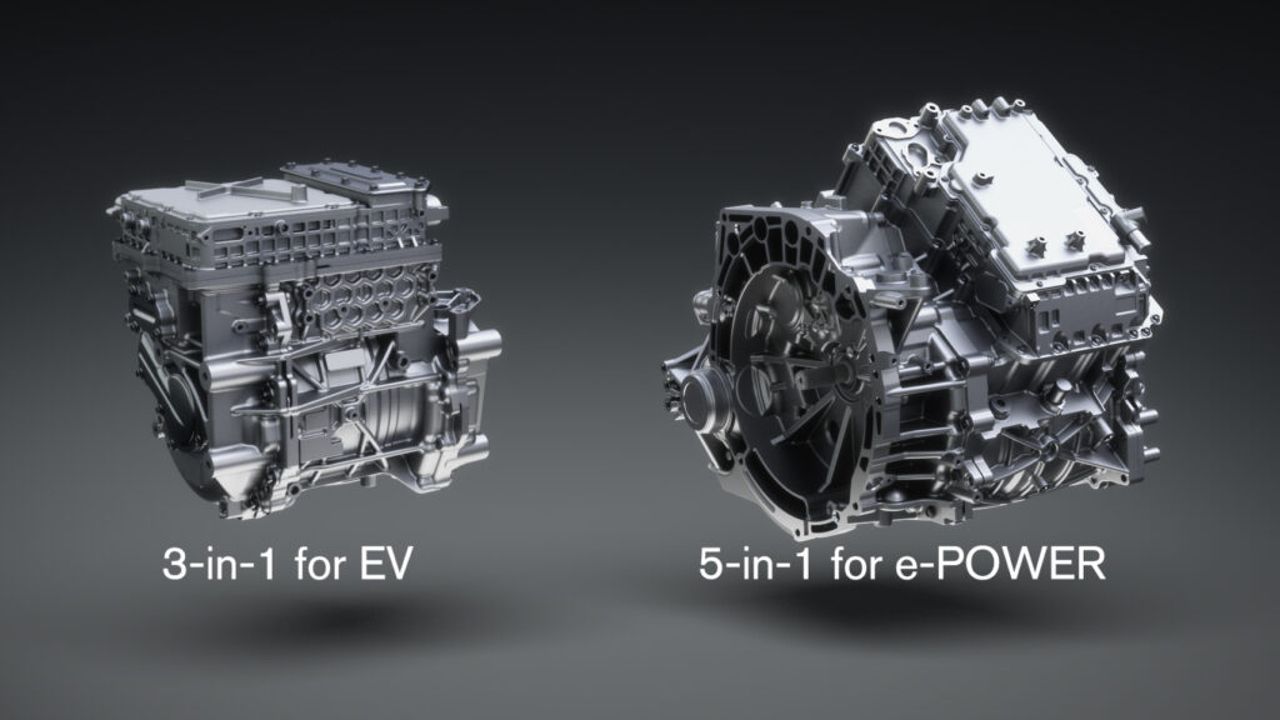
The fundamental concept of an electrified powertrain is that one or more electric motors that drive the wheels are powered by a battery pack. In addition to these two key components, there are ancillary systems that help them function. When it comes to EVs, Nissan has always been fairly active and has developed some ground-breaking technologies in the past. It has now announced a brand-new strategy for developing electrified powertrains called 'X-in-1'. The automaker has also recently updated its popular Magnite SUV for the Indian market. The most recent version of the model now comes with a number of safety features as standard across all variants. The compact SUV includes a hydraulic brake assist, electronic stability control, traction control, a tyre pressure monitoring system, dual airbags, a hill start assist, and ABS with EBD. The price of the updated 2023 Nissan Magnite ranges from Rs 6 lakh to Rs 10.58 lakh. All prices are ex-showroom. Now, let's learn more about what exactly Nissan's new strategy means for the auto industry.
Also Read: 2023 Nissan Magnite Launched in India; Price, Variants and Features Explained
Nissan's X-in-1 Strategy: What it means?
Nissan has announced the 'X-in-1' strategy, which is a new approach to developing electrified powertrains. Core EV and e-POWER powertrain components will be shared and modularised under the strategy. By 2026, this could result in 30% lower development and manufacturing costs in comparison to what they were in 2019.
Nissan is expecting to further improve the competitiveness of its EV and e-POWER vehicles through the X-in-1 approach. The auto manufacturer aims to expand its line-up with 27 new electrified models, including 19 EVs, by the fiscal year 2030 as part of its long-term strategy, Nissan Ambition 2030. By rolling out the most suitable models into each market at the right time, the carmaker hopes to attract a wide range of audience with the unique value of its electrified vehicles.
Nissan's X-in-1 Strategy: Key Details
The 'X-in-1' approach, which includes 3-in-1, 5-in-1, and other potential variants, has been created to allow the production of EV and e-POWER core components on the same line. The motor, inverter, and reducer are modularised as part of the 3-in-1 electrified powertrain, which is intended for use in EVs. For use in e-POWER vehicles, a 5-in-1 version is planned, which additionally modularises the generator and increaser.
The 'X-in-1' strategy increases production effectiveness and lowers the cost of electrified powertrains by sharing and modularising core components. By around 2026, this could bring e-POWER prices on par with those of cars with internal combustion engines. The unit's reduced size and weight enhances vehicle handling while reducing noise and vibration. By using a newly created motor, the use of heavy rare earth elements is reduced to 1 per cent or less of the magnet weight.
The advancement of battery technology is another tactic to reduce the cost difference between electric and internal combustion vehicles, which would further allow an increased adoption of EVs. Nissan's next-generation battery will be all-solid-state batteries (ASSB). These batteries can be charged in one-third less time than used by current lithium-ion batteries. Plus, they are more stable and safe.
Nissan is working to reduce the price of batteries and plans to install a pilot ASSB production line at its Yokohama plant by 2024. Until 2028, the batteries will only be used on a small scale, according to the company, after which they will be widely marketed.
Also Read: Upcoming 7-seater SUVs in India: All-new Renault Duster, Nissan X-Trail and More
Nissan's X-in-1 Strategy: Here's What the Company Has to Say
Commenting on the occasion, Toshihiro Hirai, Senior Vice-President, Nissan, said, 'We make the most of our expertise and know-how from our more-than-a-decade-long development and production of electrified technologies. Through our innovations in electrified powertrain development, we’ll continue to create new value for customers and deliver 100% motor-driven vehicles – EVs and e-POWER – as widely as possible.'





















Write your Comment